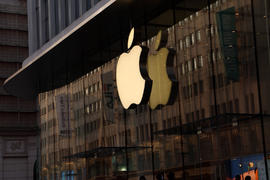Starting from next year, all Apple iPhones will adopt OLED screens, while Sharp and JDI will be phased out
According to reports, starting from 2025, all iPhone models sold by Apple will use OLED screens, including the low-end iPhone SE model. This means that Sharp and JDI, two panel suppliers, will be excluded from Apple's smartphone business.
About ten years ago, JDI and Sharp together accounted for about 70% of the iPhone screen market share. But recently, these two suppliers have only provided LCD screens for iPhone SE, as Apple has shifted the screens of high-end iPhone models to OLED, a market dominated by Korean and Chinese companies.
Multiple sources have reported that Apple has started ordering OLED screens for the upcoming iPhone SE from BOE in China and LG Display in South Korea. This change marks the end of LCD screens in the iPhone product line.
Currently, Samsung Electronics holds about half of the iPhone OLED screen market share, while LG Display accounts for about 30% and BOE accounts for about 20%. JDI and Sharp currently do not have large-scale production of OLED screens for smartphones.
Apple has not yet commented on this.
OLED screens use organic compounds in red, green, and blue to create images, which emit light on their own without the need for backlighting. Compared to LCD, OLED screens can provide brighter colors and more vivid contrast. With the increasing demand for smartphones to watch movies, sports events, and play games, Samsung began selling OLED screens as a replacement for LCDs in 2009.
And Apple first used OLED screens in the iPhone X, which debuted in 2017. Afterwards, Apple shifted its high-end iPhone models from LCD to OLED. Around 2015, JDI and Sharp delivered nearly 200 million LCD screens for iPhones annually, but by 2023, this number has dropped to around 20 million.
According to market research firm Omdia, OLED panel shipments for smartphones will surpass LCD for the first time this year. As iPads and other products begin to adopt OLED screens, it is expected that Apple will further reduce its LCD screen procurement.
Multiple sources have reported that Apple has started ordering OLED screens for the upcoming iPhone SE from BOE in China and LG Display in South Korea. This change marks the end of LCD screens in the iPhone product line.
Currently, Samsung Electronics holds about half of the iPhone OLED screen market share, while LG Display accounts for about 30% and BOE accounts for about 20%. JDI and Sharp currently do not have large-scale production of OLED screens for smartphones.
Apple has not yet commented on this.
OLED screens use organic compounds in red, green, and blue to create images, which emit light on their own without the need for backlighting. Compared to LCD, OLED screens can provide brighter colors and more vivid contrast. With the increasing demand for smartphones to watch movies, sports events, and play games, Samsung began selling OLED screens as a replacement for LCDs in 2009.
And Apple first used OLED screens in the iPhone X, which debuted in 2017. Afterwards, Apple shifted its high-end iPhone models from LCD to OLED. Around 2015, JDI and Sharp delivered nearly 200 million LCD screens for iPhones annually, but by 2023, this number has dropped to around 20 million.
According to market research firm Omdia, OLED panel shipments for smartphones will surpass LCD for the first time this year. As iPads and other products begin to adopt OLED screens, it is expected that Apple will further reduce its LCD screen procurement.